
WeldMart Inc. MIG vs. MAG Welding Is There a Difference? Milled
The primary difference between MIG and MAG welding is their full forms. MIG is an acronym for Metal Inert Gas, while MAG stands for Metal Active Gas. The names differ in the gases used to shield the welding arc. Gas Used in Shielding the Weld. MIG welding uses inert gases, such as Helium and Argon, to shield the welding arc.
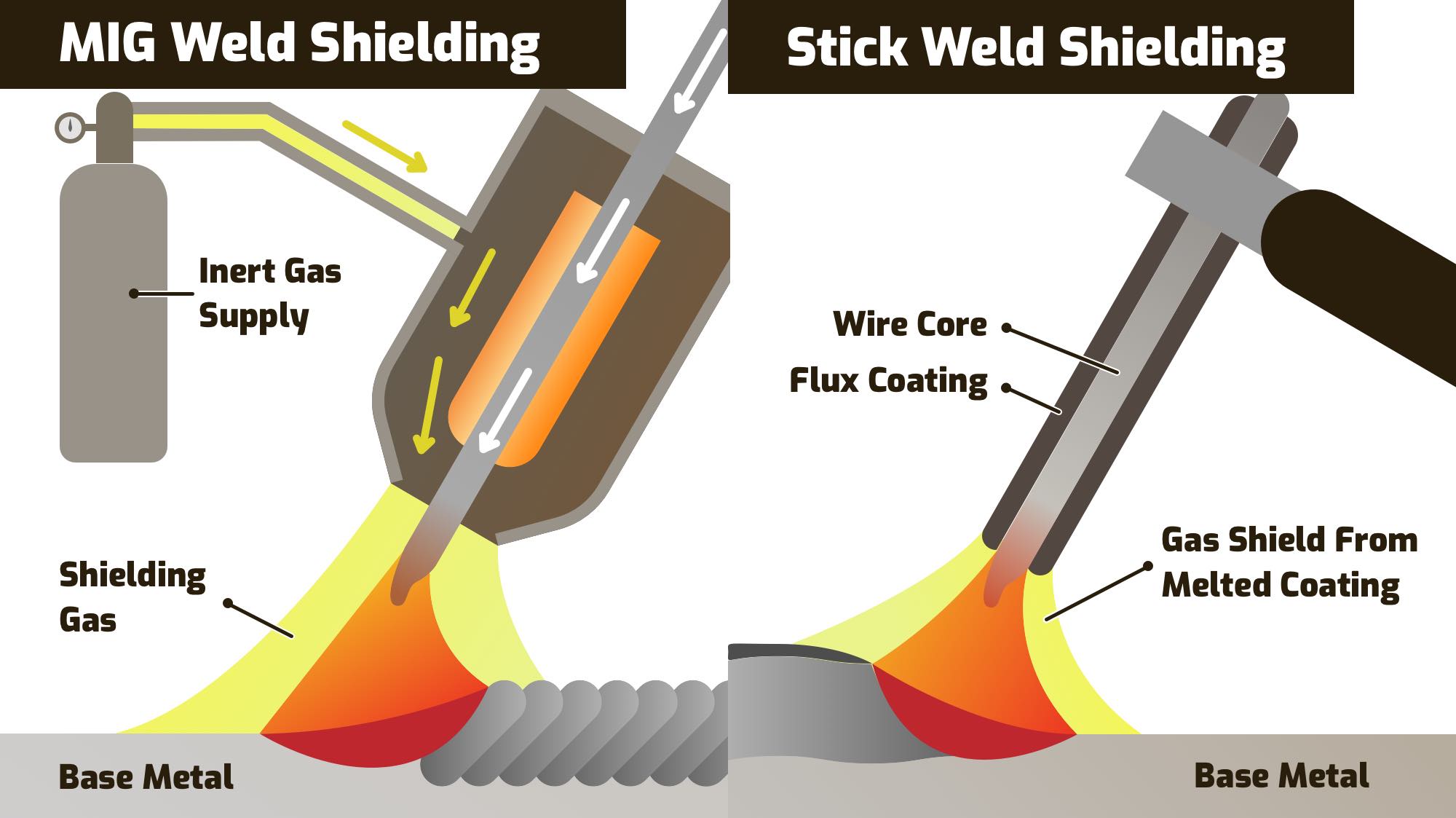
MIG vs Stick Welding Which is Better? (Pros & Cons)
The MIG and MAG welding methods differ from each other in that MIG (metal inert gas) welding uses an inert shielding gas, which does not participate in the welding process, while MAG (metal active gas) welding employs an active shielding gas that participates in the welding process.
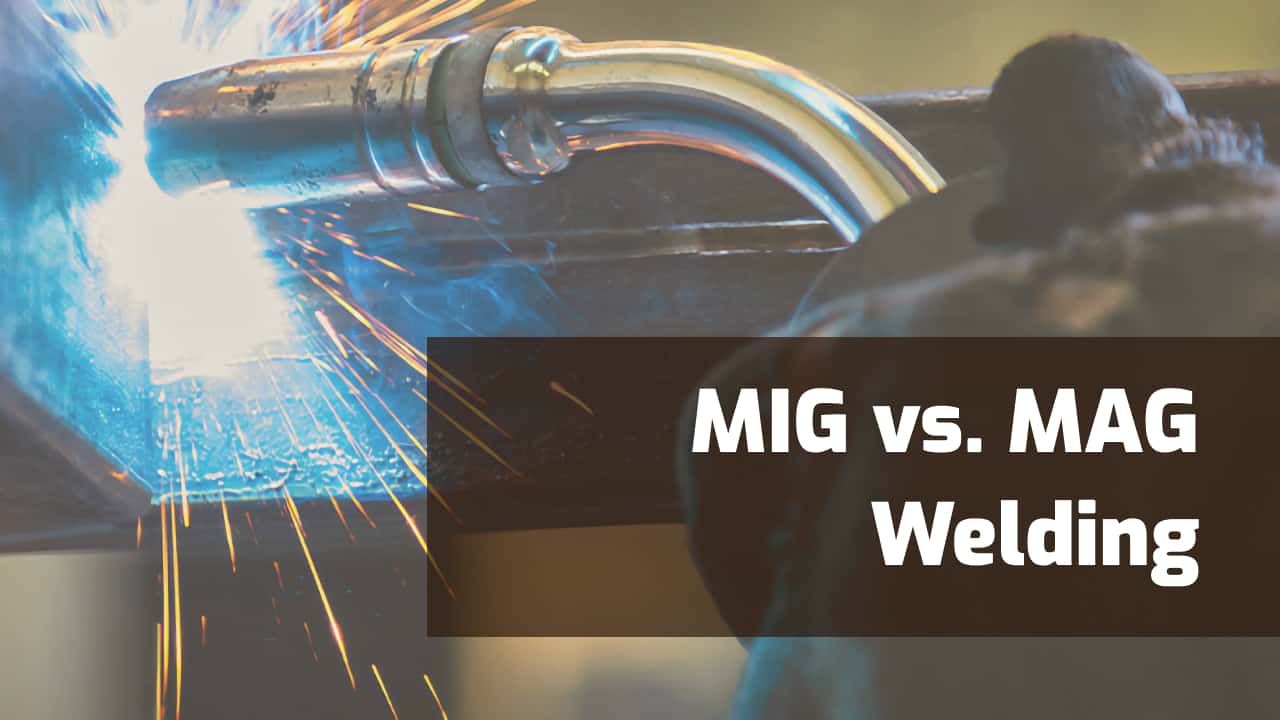
MIG vs. MAG Welding Differences & When To Use Them
MIG vs MAG Welding, the primary difference between MIG (Metal Inert Gas) and MAG (Metal Active Gas) welding lies in the type of shielding gas used. MIG welding uses inert gases like argon or helium, which provide a stable, non-reactive environment for welding.
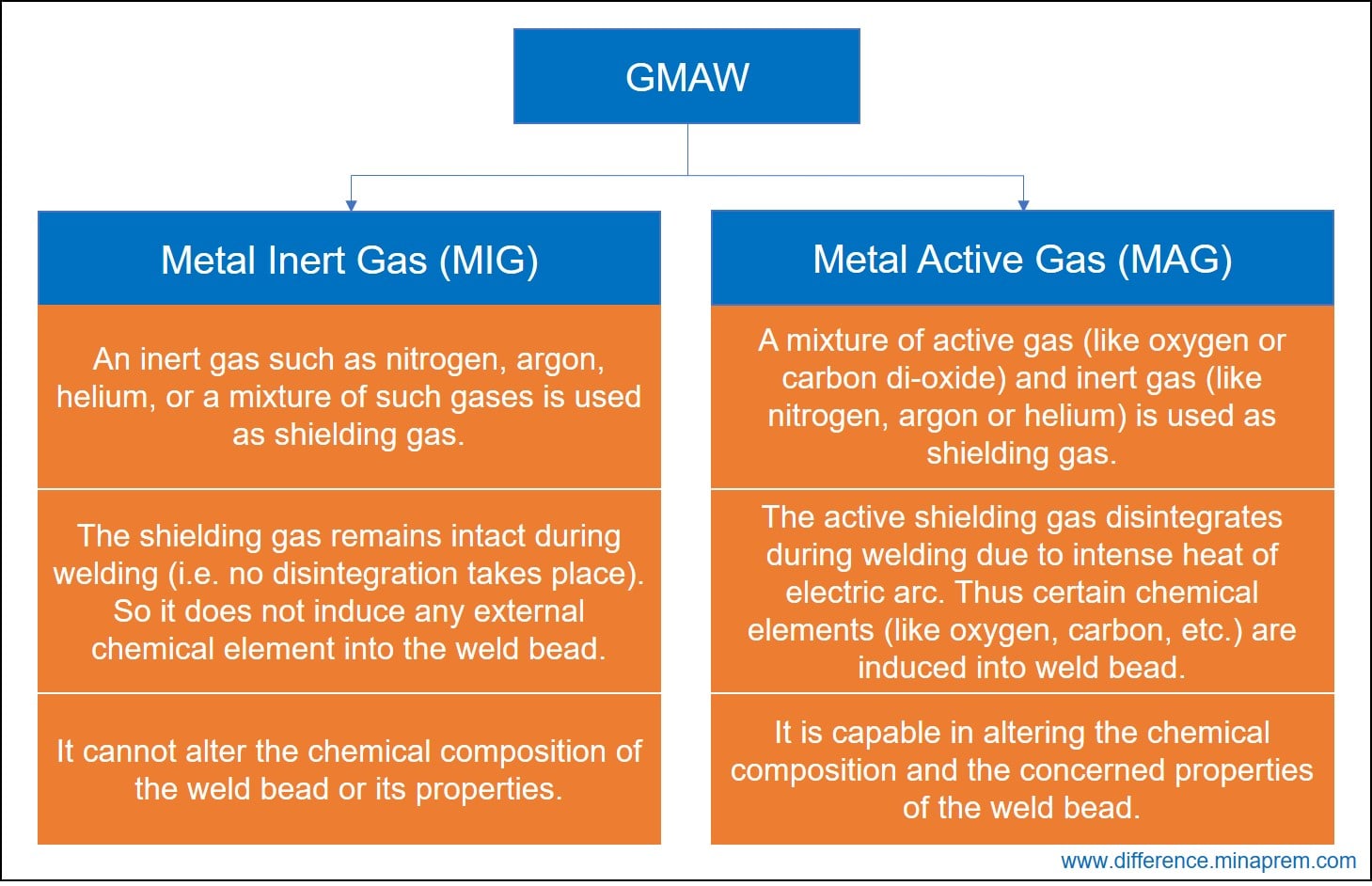
Difference Between MIG and MAG Welding
Here are a few of the key considerations when deciding whether MIG or MAG welding is best for your needs: MAG welding is more cost-effective than MIG welding. MAG welding provides more penetrating power. MAG welding is best used on thicker, ferrous metals like steel. MIG welding is more accurate and precise than MAG welding.

What is the difference between MIG and MAG? RELONBrandMIGInverterWeldingMachine
Metal Inert Gas (MIG) welding and Metal Active Gas (MAG) welding, process numbers 131 and 135 respectively in accordance with ISO 4063, are both variations of the Gas Metal Arc Welding (GMAW) process, which they are more commonly referred to as in USA and some other countries. These use heat created from an electric arc between a consumable metal electrode and a workpiece, creating a weld pool.

Differences between MIG Welding and MAG Welding. YouTube
MIG/MAG welding is also referred to as gas metal arc welding. A differentiation is made between metal inert gas welding (MIG) and metal active gas welding (MAG). MIG/MAG is currently the most frequently used welding process and allows for particularly high welding speeds. It can be used in a manual, mechanized or robot-supported manner.
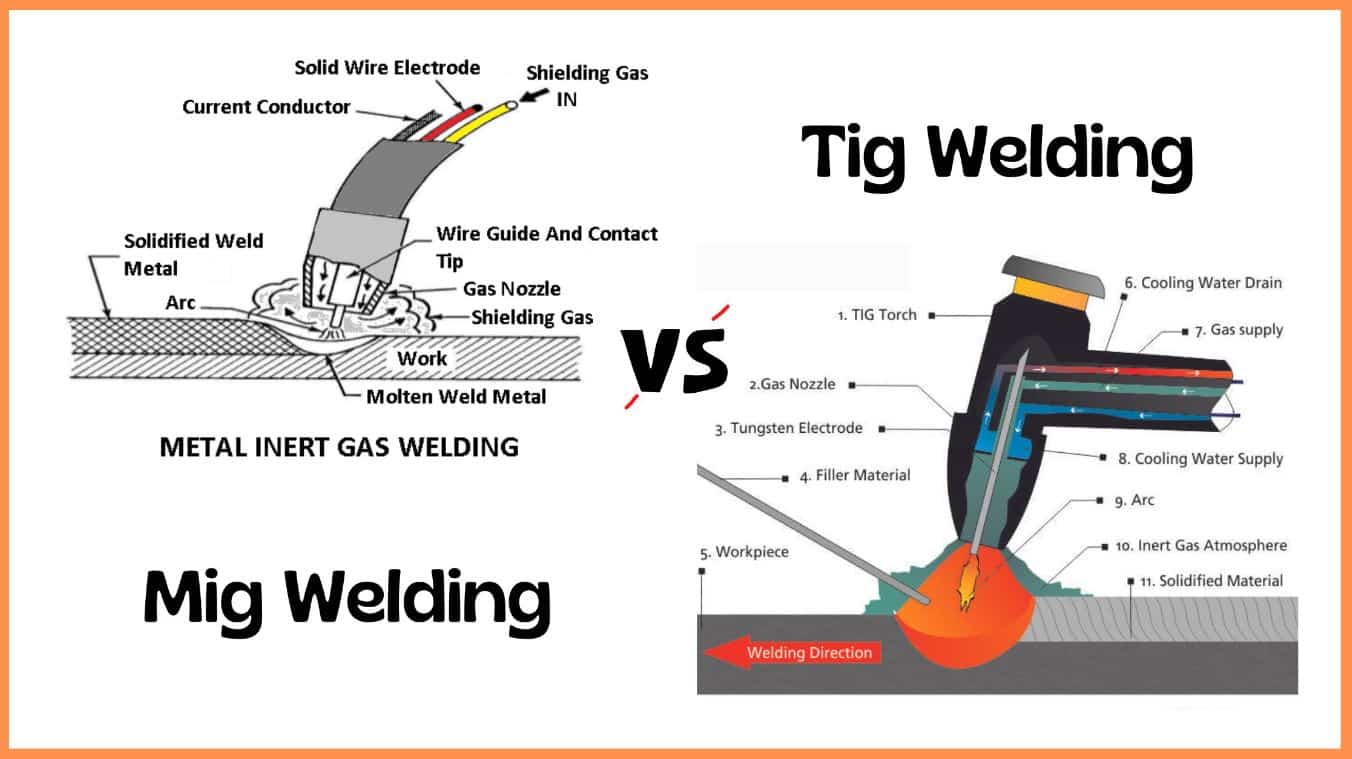
Tig and Mig Welding The Real Differences Explained [PDF]
Following are the differences between these processes: TIG & MIG uses Inert gases while MAG uses active gases. MIG & MAG uses solid wire spool for welding while TIG uses solid straight length (1 m) of wires. MIG-MAG has high weld deposit while TIG is a slow weld deposition process.
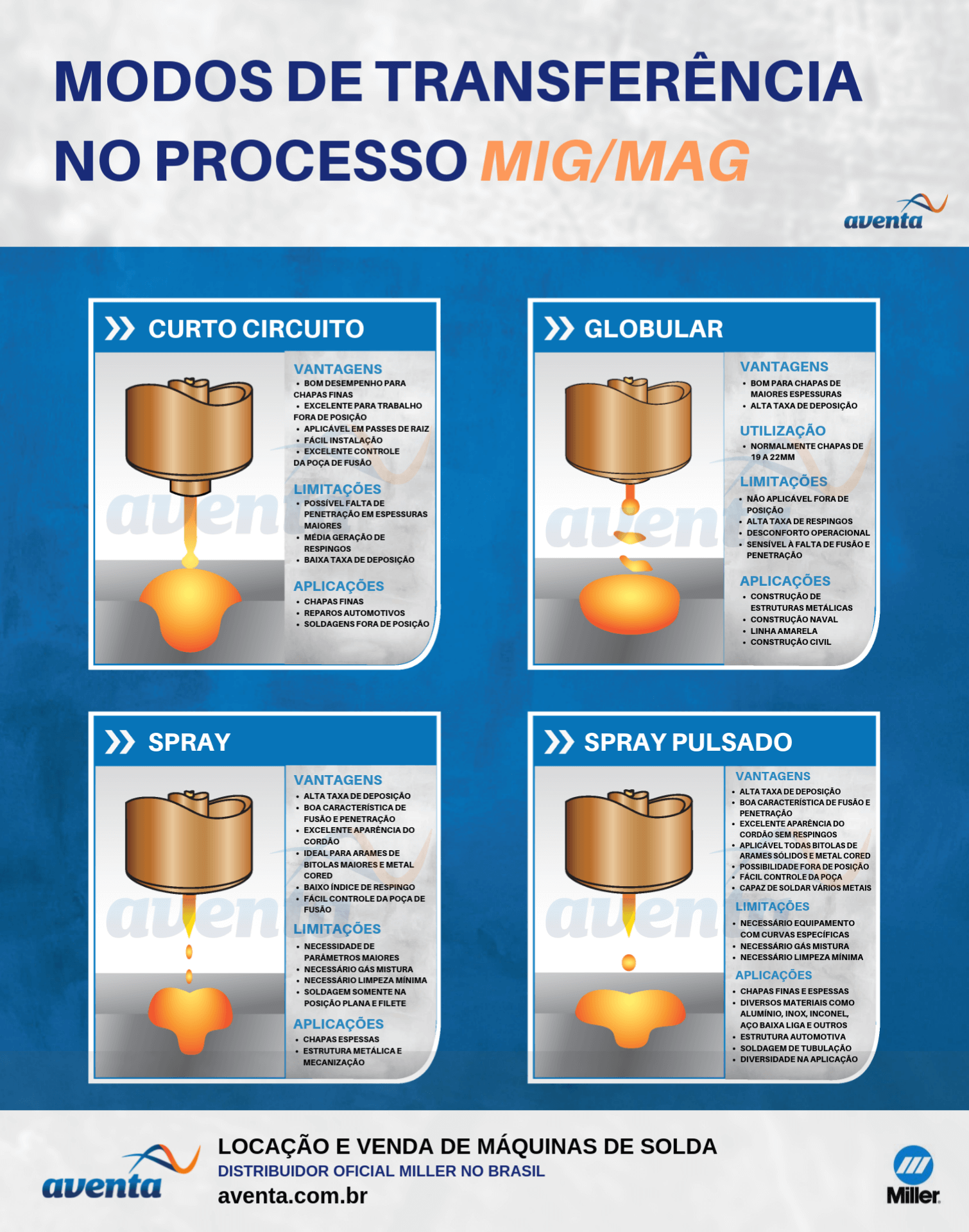
Modos de Transferênica MIG MAG (Tabela)
This video covers a detailed discussion on the major differences between MIG Welding and MAG Welding.Subscribe to @AcademicGainTutorials for more Updated Vid.

MIG vs. MAG Welding Is There a Difference YesWelder
We made a detailed comparison of MIG Welding and TIG Welding in the last article, and now we will compare the similarities and differences of another two welding processes under gas metal arc welding (GMAW): MIG welding VS. MAG Welding. MIG welding and MAG welding are two common types of gas metal arc welding (GMAW) that use an electric arc to melt and join metal pieces.

diferencia entre soldadura mig y mag 17 Soluciones para Diferencia Entre Soldadura Mig Y Mag
Metal Inert Gas (MIG) and Metal Active Gas (MAG) are two different types of GMAW processes. Shielding gas is necessary (and thus used) in both the cases; however, composition of shielding gas is different. In fact, constituent of shielding gas is primary factor for classifying GMAW process as MIG and MAG.

MIG vs. MAG Welding Is There a Difference YesWelder
MIG uses an inert gas, while MAG uses active gasses. Both processes have some overlapping procedures and are easily adapted to robotic manufacturing. Knowing which process to use is critical to the weld quality of every project. How do you know whether to use standard MIG (GMAW) or MAG (GMAW-A)?

MIG / MAG welding everything you need to know
6. MIG Vs. MAG Welding - FAQ. Two of the more prevalent welding techniques are being put under the critiquing lens in this process comparing post. The first is MIG welding, a method that relies heavily on an inactive shielding gas. That gas is there to block the atmospheric effects of air. MAG (Metal Active Gas) equipment rigs, on the other.
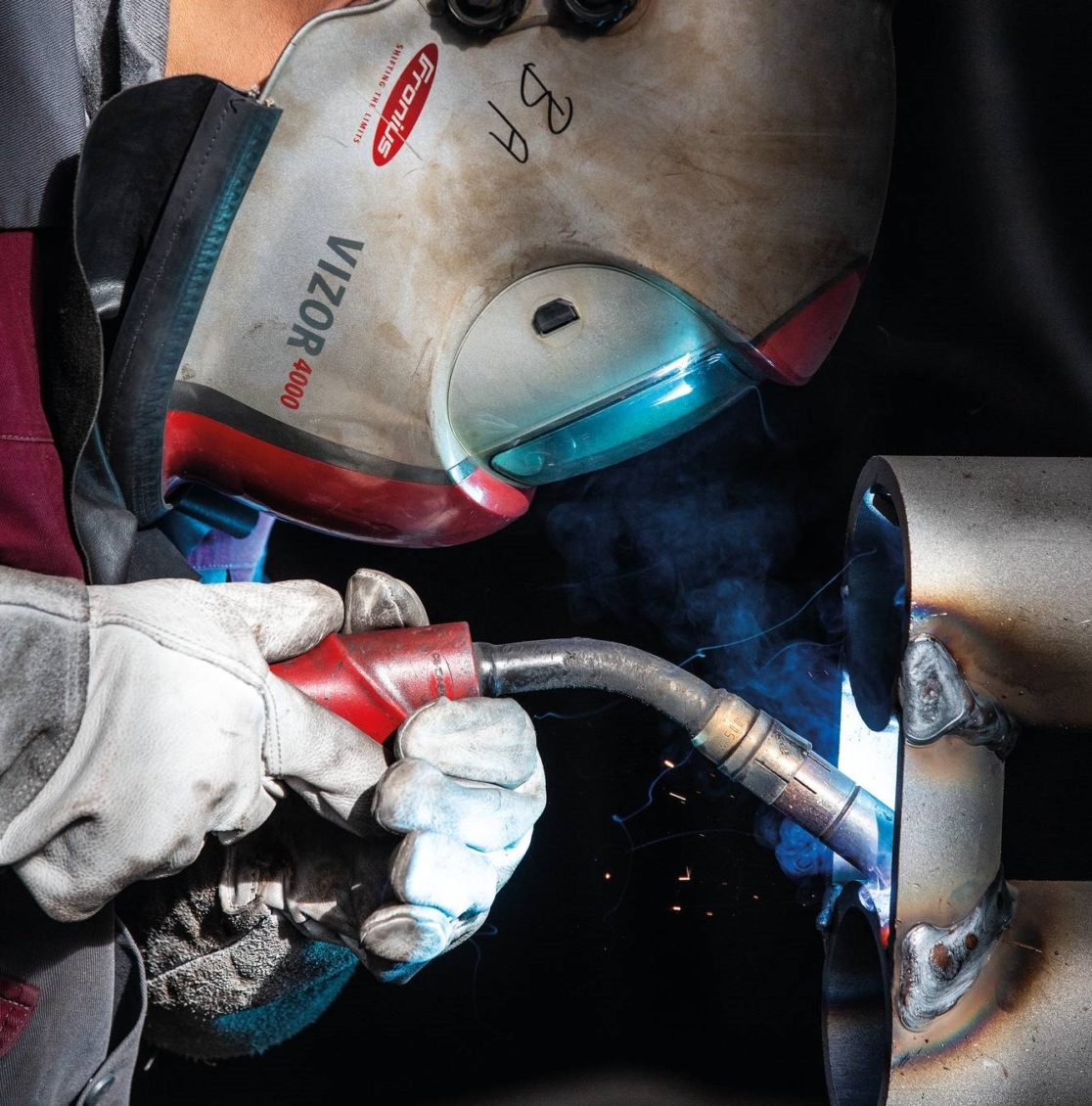
What is MIG/MAG Welding? The Basics and advantages
The Main Difference Between MIG and MAG Welding MIG welding and MAG welding are similar in many ways, but the biggest way they differ is in their shielding gas. In welding, the shielding gas is a gas used at the welding torch to help prevent the weld from oxidizing due to the oxygen in the surrounding atmosphere.

MIGMAG welding YouTube
Gas Metal Arc Welding "Mig" Welding. Gas metal arc welding (GMAW), sometimes referred to by its subtypes metal inert gas (MIG) and metal active gas (MAG) is a welding process in which an electric arc forms between a consumable MIG wire electrode and the workpiece metal(s), which heats the workpiece metal(s), causing them to fuse (melt and join). Along with the wire electrode, a shielding gas.

MIG Vs. MAG Welding|Tooliom
MIG/MAG welding is also known as gas-shielded metal arc welding (GMAW) and is one of the welding processes that uses a protective gas shield. This also includes all arc welding processes where shielding gases are used to protect the weld pool from unwanted contact with the oxygen in the ambient air.
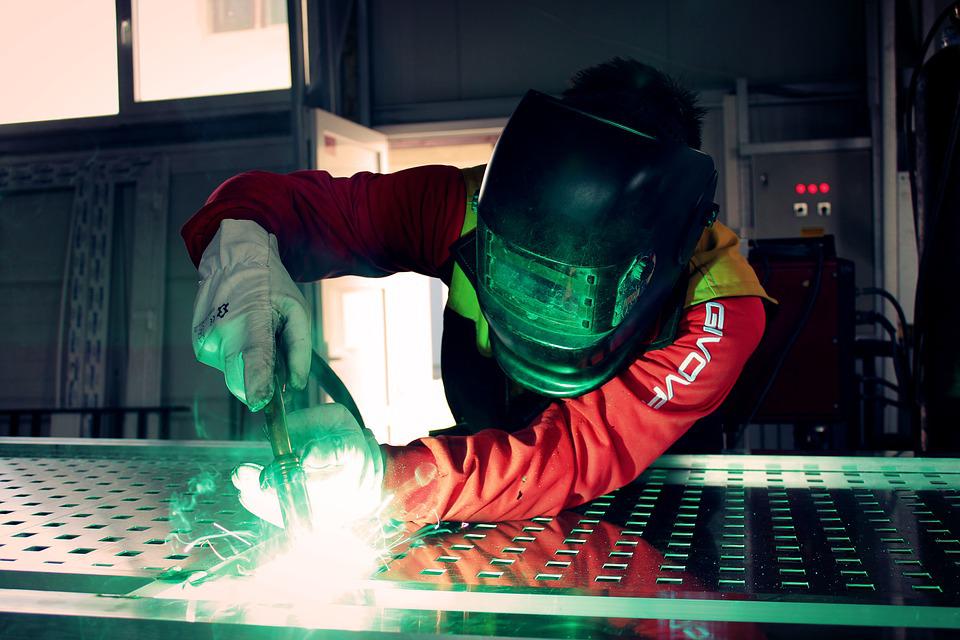
MIG vs MAG welding differences
MIG welding, also known as Metal Inert Gas welding, is a welding process that uses inert gases like argon and helium to shield the weld puddle from atmospheric contamination. Inert gases don't chemically interact with the molten metal, so they don't influence the weld to a large extent.